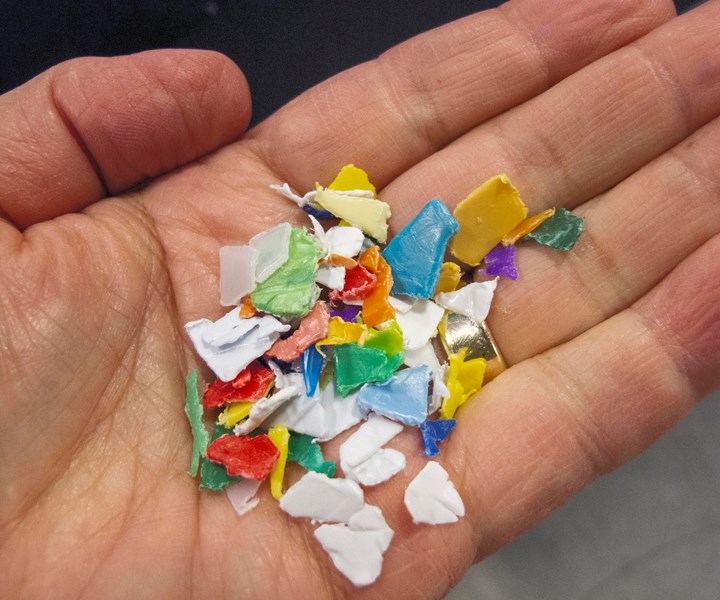Time to Learn More About the Real World of Recycling
Next month, Plastics Technology will cover the challenges of recycling with a targeted print and electronic supplement—and a focused webinar—highlighting best practices in processing with high levels of PCR.
Sustainability. The Circular Economy. Cradle to Cradle. Yesterday’s buzzwords have become today’s reality for plastics processors. Pledges from brand owners and OEMs to produce products—or package them—in previously used materials will be forcing dramatic changes across the entire plastics processing supply chain. Simply, if you’ve been molding or extruding products from all-virgin materials—because that’s what your customer and the application demanded—you will most likely be asked to change things up in the near future.

How will plastics processors deal with brand owners’ demands for more recycle content? That’s the theme of a special supplement and webinar next month.
Think of all the far-flung obstacles that have to be overcome before this becomes a reality. If you are making, for example, a sophisticated packaging film for a high-end application, are you going to be able to change that to one containing 10-50% post-consumer reclaim at a flip of the switch? Heck no. For starters, from where are you going to source this material? And if and when you get it—even if it’s in pristine condition—will you be able to drop it into an existing process and go about the rest of your day? I doubt it.
We seen some indications from your suppliers that they are bracing for change. Resin companies have grades on the street containing quantities of post-consumer material. And even machine builders are designing new features into blenders and conveying systems to accommodate higher usage of PCR.
Yesterday’s buzzwords have become today’s reality for plastics processors.
We at Plastics Technology are trying to give you some guidance as you navigate this rocky road. Next month, packaged with your May issue, you’ll be receiving a supplement looking at recycling that will contain these elements:
• A summary of the pledges made by some major brand owners to include specific amounts of PCR in the packaging within a specific time frame, pledges that will change the way you manufacture products for them.
• A look at the steps major processors in injection molding, extrusion, blow molding and compounding are taking to meet these demands, focusing mostly on the new supply channels and processing techniques that are being utilized.
• An examination of the role chemical recycling will play in the way in which you will specify materials in the year ahead.
This supplement will be available in print and electronically (it will be on our website, of course, and will be delivered via email as an e-newsletter). And on May 6, we will be holding a no-charge, one-hour webinar focusing on recycling best practices that will hone in on what you need to do differently at your plant—from handling to drying to conveying to blending to processing—to meet these escalating demands for PCR use while still producing a high-quality product.
We hope you will find the content in these products useful, and that you will be able to learn from the experiences of experts in the field to ease your transition into this challenging territory.
Related Content
-
Roll Cooling: Understand the Three Heat-Transfer Processes
Designing cooling rolls is complex, tedious and requires a lot of inputs. Getting it wrong may have a dramatic impact on productivity.
-
How to Select the Right Tooling for Pipe Extrusion
In pipe extrusion, selecting or building a complementary set of tooling often poses challenges due to a range of qualitative factors. Here’s some guidance to help you out.
-
Part 2 Medical Tubing: Use Simulation to Troubleshoot, Optimize Processing & Dies
Simulation can determine whether a die has regions of low shear rate and shear stress on the metal surface where the polymer would ultimately degrade, and can help processors design dies better suited for their projects.















